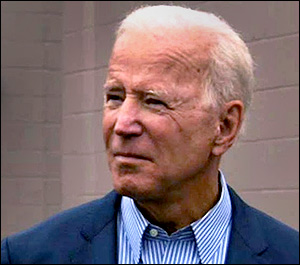By Jim Ellis
May 24, 2021 — Data points are routinely being published covering the electorate’s status, leading to various conflicting conclusions. This allows both Democrats and Republicans to promote favorable prediction trends for the 2022 elections.Presidential job approval is often used as a key prediction benchmark. The Gallup Research organization pioneered presidential job approval tracking, beginning in the 1950s with President Dwight D. Eisenhower, and the tradition continues today.
During that approximate 70-year period, the average performance for a newly elected president in his first 100 days in office is 61 percent favorable. Only those presidents who were elected are included in the Gallup survey. This means that presidents Lyndon B. Johnson, who ascended to the office when John F. Kennedy was assassinated, and Gerald R. Ford, who became president when Richard M. Nixon resigned, are not included.
If you remove, however, the highest rated national leader, President Kennedy (81 percent approval) and the lowest, President Donald J. Trump (41 percent), the adjusted average climbs to 63 percent.
In his first 100 days, Gallup rates President Biden with a 57 percent approval figure, thereby placing him as only the 9th most popular of the 11 newly elected modern era chief executives.
The top three rated presidents in their first 100 days are Kennedy (81 percent), Eisenhower (74 percent), and Ronald Reagan (67 percent). The three lowest are presidents Trump (41 percent), Bill Clinton (55 percent), and Biden (57 percent).
Other surveys rate Biden’s performance somewhat lower, however. In the month of May, eight additional pollsters have tested the president’s job performance and found his favorable score in a tight range, from 51-54 percent with his disapproval percentage spanning from 35 to 48.
The generic polling question is one where a survey respondent is asked whether they would vote for the Republican or Democratic House of Representatives candidate. Right now, we’re seeing the generic numbers span the ideological spectrum, which tells us the great partisan divide is still very much alive. The left-leaning pollsters are seeing big leads for Democrats, while the more conservative-oriented pollsters find the responses very tight.
From May 6 through 18, we see left-of-center pollsters Redfield & Wilton Strategies and Ipsos, both international firms, giving Democrats leads of seven and eight points among registered US voters, while firms such as RMG Research and McLaughlin & Associates find the Democrats up only one point and the GOP ahead by the same margin, respectively.
Keep in mind, directly before the 2020 election, seven polling firms said voters preferred Democrats in a range of two to 11 points (average: 7), yet the Republicans gained a net 13 seats in the House elections.
A more recent electorate measurement has been testing voters’ enthusiasm about an upcoming election. This often reveals the party that has the greater momentum heading into the voting period and often detects major political trend swings.
The progressive left Democracy Corps organization just completed one of their regular battleground states polls through Greenberg Research (April 27-May 3; 1,000 registered voters in identified battleground states with a 500-person Republican over-sample, live interview). The survey was designed to mainly test the Trump loyalty factor within the GOP and to examine voter enthusiasm for the midterm elections.
Not surprisingly, the survey showed that the Republican coalition, particularly the Trump loyalists, are more intense about the next election than their Democratic counterparts. The Republican respondents recorded 68 percent in the highest enthusiasm category, down from 84 percent before the 2020 election; while Democrats registered only 57 percent from their high of 85 percent.
It is typical that the party scoring a big victory in the previous election tends to be less politically focused about immediate future voting opportunities. This supports the conclusion that the party winning the White House almost always loses congressional seats in the succeeding midterm election.
To summarize, President Biden’s numbers are relatively weak in comparison to his modern day counterparts but much better than his predecessor, former President Trump. Democrats likely have an advantage on the generic vote question, as they almost always do in part because the metropolitan areas are typically over-sampled, and Republicans look to have the early edge in voter enthusiasm and intensity.
Together, the early numbers suggest uncertainty for 2022, meaning that public affairs and the campaigns themselves will have a major impact upon which party establishes a winning momentum. As has been the case in the last several elections, almost anything can happen.

